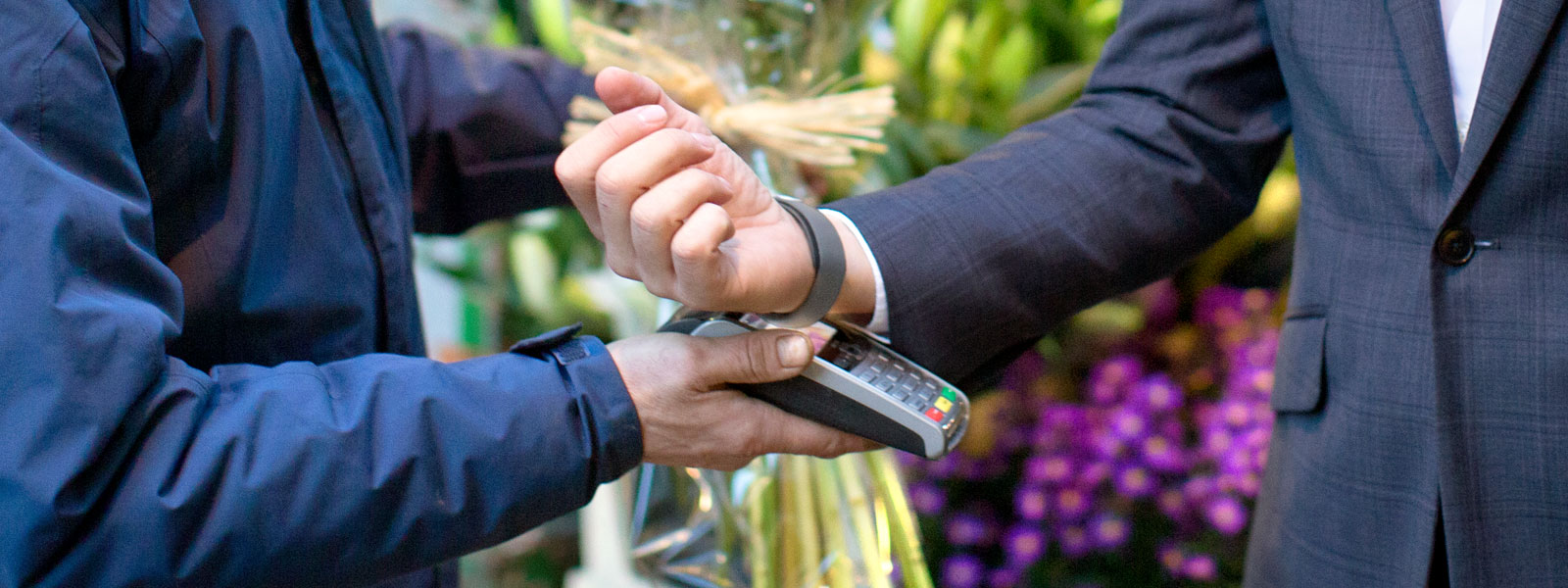How new payment technology is changing the game
Anita Liu Harvey, Barclaycard director of strategy, looks at what’s in store for the future of payments and how it will change the way we shop and pay.

In 2010, debit cards overtook cash[1] as Brits’ favourite payment method. Since then, technological advances have created new ways to pay that are being embraced by a growing number of consumers.
We might not be ready to become a completely cashless society just yet, but new technologies are already changing the way we pay. Visits to ATMs are declining[2] while mobile payment services and the payment capabilities of smartphones and smart watches are becoming increasingly popular.
Here’s a quick look at the payment technology of tomorrow and the impact these innovations will have on how we’ll pay in future.
Biometrics and beyond
One innovation which has already become part of customers’ daily lives is biometrics. More recently, smartphones now have fingerprint scanners, facial recognition and even iris scanning[3]. This has helped consumers become more comfortable with the concept, which in turn will help fast-track further innovations from the biometric security space such as vein pattern recognition[4] and voice security into everyday use.
In future, innovations such as these could do away with PINs and passwords for good, making payments faster, safer, and more personal than ever before.
Finger(print) on the pulse
“Whether buying a bottle of water when out for a run, or a newspaper on an afternoon stroll around the city, today’s shoppers are looking for ‘built-in’, seamless payment experiences,”[5] says Barclays Mobile Payments’ Business Development Director Adam Herson.
In future, innovations such as these could do away with PINs and passwords for good, making payments faster, safer, and more personal than ever before.
In Sweden, some commuters[6] have taken this to a new level with the use of sub dermal implants – microchips embedded into their hands – to pay for their trips.
And in Britain, consumers are showing an appetite for wearable tech in the more traditional sense, with 26%[7] of people saying they were willing to start using “tap and go” contactless payments with a smart watch, bracelet, keyring or other forms of wearable technology. Wearables are as convenient as smartphones, with the added benefit that they’re easier to carry and blend seamlessly with what consumers are wearing.
With global smart watch sales set to double in the next four years[8], the future of wearable payments is looking bright. It’s likely we’ll soon start to see more bracelets or other items of jewellery which can be used to make contactless payments. Whether more people opt for the ‘surgical’ option, remains to be seen.

Making payment invisible
The payments holy grail for merchants is ensuring a seamless transaction experience. This means making the payment experience for consumers as ‘invisible’ as possible – a strategy perfected by the likes of Uber and Deliveroo whose services customers pay for without even thinking.
Customers increasingly expect payments to be built into the customer experience, with the act of paying decoupled from the act of buying.
Amazon is reportedly planning[9] to bring “Just Walk Out” technology to the UK soon following on from successful trials of its checkout-free store Amazon Go in the US. Sainsbury’s is also piloting its own version of checkout-free technology[10].
Customers increasingly expect payments to be built into the customer experience, with the act of paying decoupled from the act of buying. The key is for payments to be fast and frictionless – people don’t expect to queue up to pay anymore, they want to be able to pay before or even after collecting their product.
With this in mind, in 2018 Barclaycard piloted an app that allows users to ‘dine and dash’[11] — pay for a meal without having to get a waiter’s attention and the bill, paving the way for ‘invisible,’ seamless payment.
Wrapping up
It’s obvious that the way customers pay for goods and services is rapidly changing. But with the increased connectivity of the modern world and technological breakthroughs that have yet to even happen, how exactly will we know what payment technology will stay for good and what is just a passing trend?
For new payment technology to make an impact it has to prove itself as more beneficial than existing systems. Ultimately, it’s the customer who decides with their feet whether a trend will catch on or move on, and the responsibility of merchants to react to these trends appropriately and ensure they have the right systems, and are working with the right payment partners to satisfy consumer demand.
[1] The UK Card Association | A Decade of Cards, 2000 - 2010… and beyond http://www.theukcardsassociation.org.uk/wm_documents/decade_of_cards_final.pdf
[2] Access to Cash | Access to Cash Review https://www.accesstocash.org.uk/media/1087/final-report-final-web.pdf
[3] Samsung | Security https://www.samsung.com/global/galaxy/galaxy-s8/security/
[4] Biometric Update | Fingopay deployments for biometric finger vein payments expanding https://www.biometricupdate.com/201812/fingopay-deployments-for-biometric-finger-vein-payments-expanding
[5] Barclays | Partners with seven watch brands to meet growing demand for contactless payment timepieces https://newsroom.barclays.com/r/3576/bpay_partners_with_seven_watch_brands_to_meet_growing
[6] The Independent | Swedish commuters can use futuristic hand implant microchip as train tickets https://www.independent.co.uk/travel/news-and-advice/sj-rail-train-tickets-hand-implant-microchip-biometric-sweden-a7793641.html
[7] Mastercard | 17 million Brits ready to pay with wearable devices https://newsroom.mastercard.com/eu/press-releases/17-million-brits-ready-to-pay-with-wearable-devices/
[8] https://www.zdnet.com/article/smartwatch-sales-will-double-in-next-four-years/
[9] The Evening Standard | No checkouts, no queues: are Amazon Go supermarkets coming to the UK? https://www.standard.co.uk/tech/amazon-go-uk-locations-scouting-a3955876.html
[10] Sainsbury’s | Skip the queue, scan & go: Sainsbury’s launches till-free shopping https://www.about.sainburys.co.uk/news/latest-news/2018/new-till-free-shopping
[11] Barclaycard | Dining on demand: Barclaycard launches first ‘Dine & Dash’ restaurant https://www.home.barclaycard/media-centre/press-releases/Barclaycard-launches-first-Dine-and-Dash-restaurant.html

What’s your Strong Customer Authentication strategy?
Like all regulation, Strong Customer Authentication (SCA) brings new challenges. But with the right strategies in place, merchants can be compliant, help reduce fraud and offer secure payments. For more information, see our whitepaper: Demystifying the payment landscape: PSD2, SCA and the security challenge.
Share this article